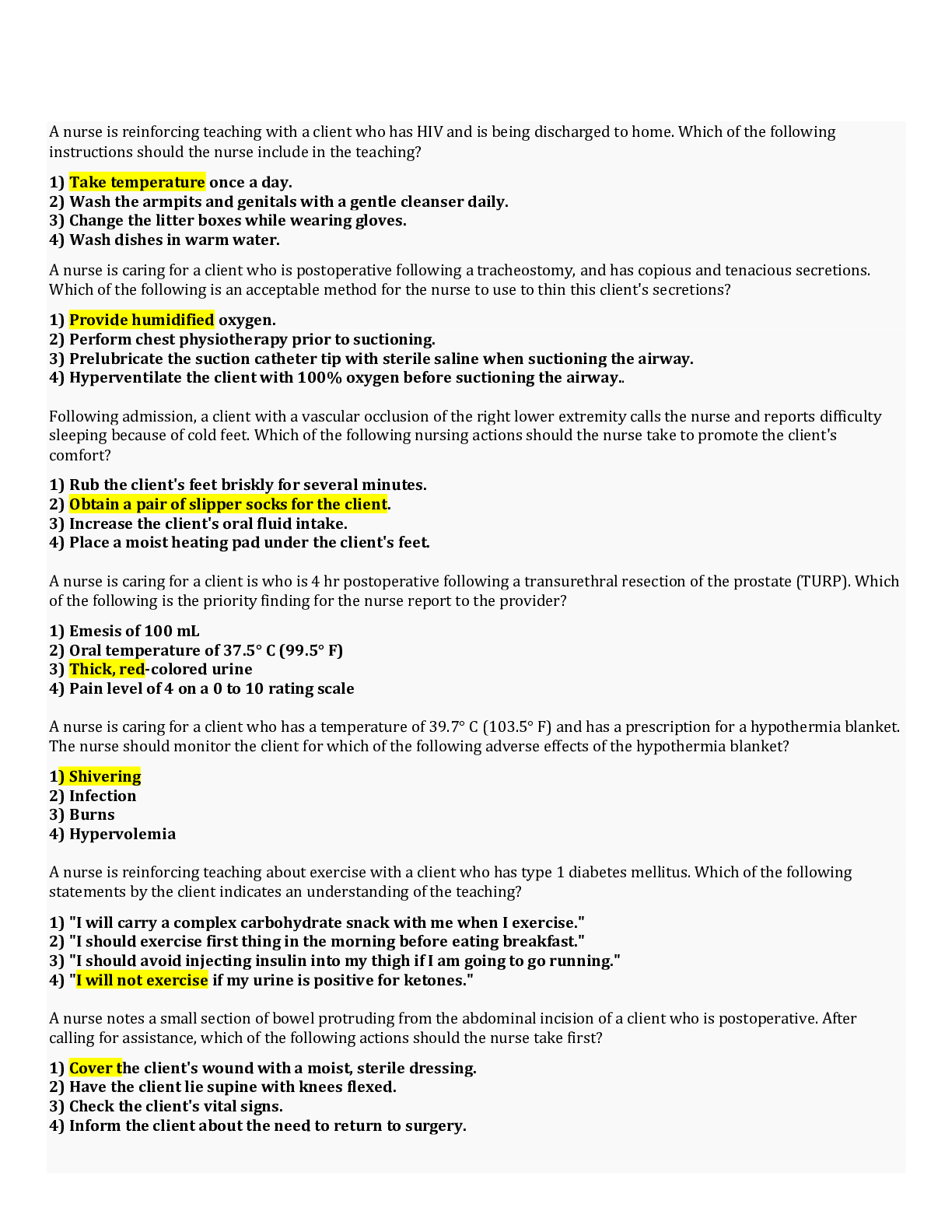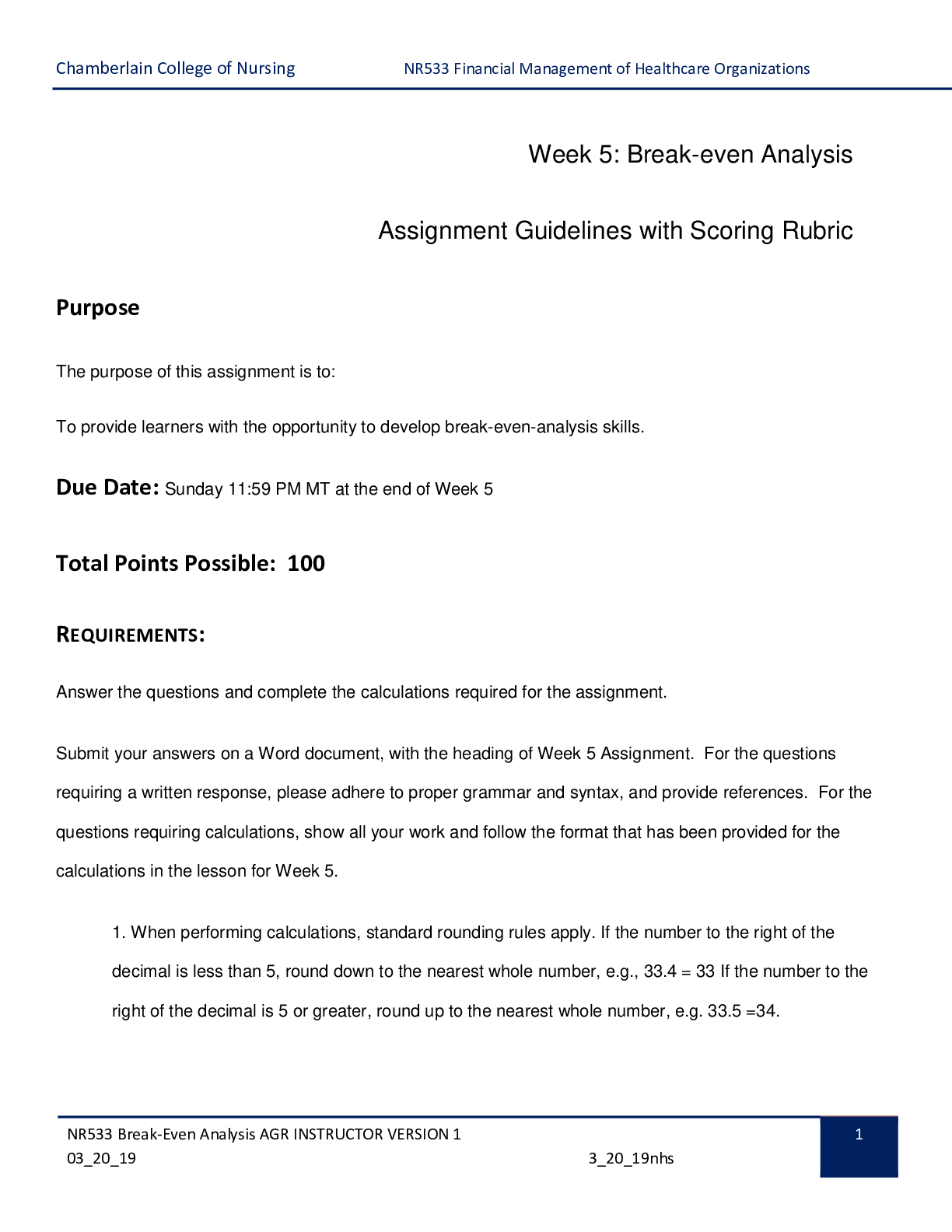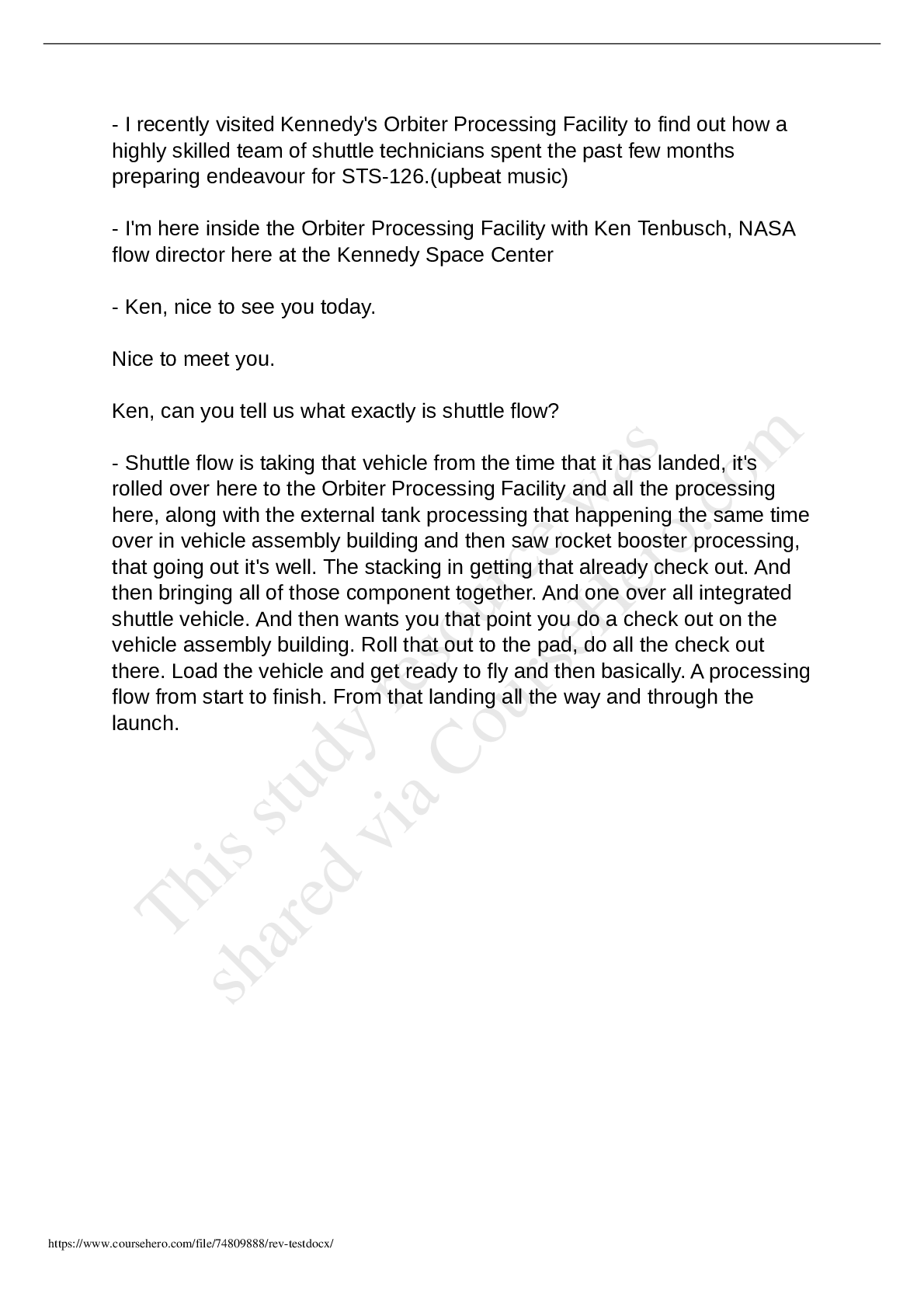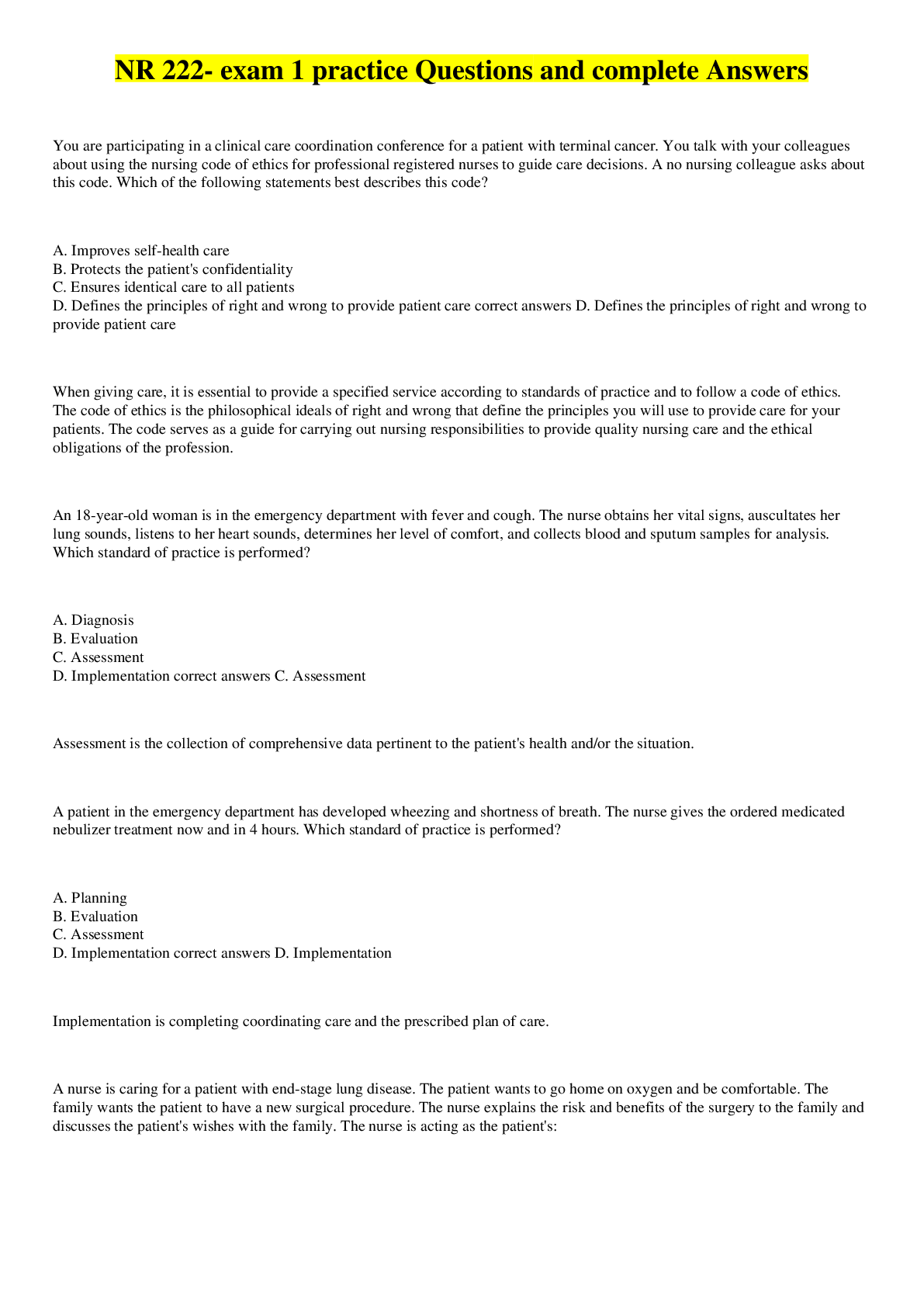*NURSING > STUDY GUIDE > NURSING 222 Maternity Intrapartum Care (All)
NURSING 222 Maternity Intrapartum Care
Document Content and Description Below
MATERNITY INTRAPARTUM NURSING CARE Labor and Delivery Processes, Pain Management, Fetal Assessment During Labor, Nursing Care During Stages of Labor, Therapeutic Procedures to Assist with Labor and... Delivery, Complications Related to the Labor ProcessLabor and Delivery Processes PRECEDING LABOR: Backache, Weight loss, Lightening-fetus head drops into pelvis (easier breathing, more pressure on bladder), Braxton Hicks, Increased vaginal discharge or bloody show, energy burst (nesting), and less common GI changes, Cervical ripening, ROM ASSESSMENT OF AMNIOTIC FLUID Clear, watery, pale, straw yellow with no foul odor. 500-1200 mL. Nitrazine paper to determine if amniotic fluid is present. Cervix should dilate 1 –1.5 cm per hour. Every state and phase is shorter if it’s not the first pregnancy. TRUE LABOR—CONTRACTIONS Contractions become regular in frequency. Stronger, last longer, more frequent. Felt in lower back radiating to abdomen. Walking can increase intensity. Continue despite comfort measures TRUE LABOR –CERVIX Progressive change in dilation and effacement. Moves to anterior position. Bloody show. TRUE LABOR-FETUS Presenting part engages in pelvis. FALSE LABOR-CONTRACTIONS Painless, irregular, intermittent. Walking decreases duration and frequency. Felt in lower back or above umbilicus. Often stop with sleep or comfort measures. FALSE LABOR-CERVIX No change in dilation or effacement. Often remains in posterior position. No significant bloody show. FALSE LABOR-FETUS Presenting part is not engaged in pelvis.Labor and Delivery Process Four STAGES First one has 3 PHASES FIRST STAGE LATENT PHASE 0-3 cm Contractions: 5-30 mins, lasting 30-45 seconds FIRST STAGE ACTIVE PHASE 4-7 cm Contractions: 3-5 mins, lasting 40-70 seconds FIRST STAGE TRANSITION 8-10 cm Contractions: 2-3 mins, lasting 45-90 seconds SECOND STAGE 30 min—2 hr Begins at: Full dilation Progresses to intense contractions every 1- 2 min Ends at: Birth THIRD STAGE 5-30 min Begins at: Delivery of the neonate Ends at: Delivery of placenta FOURTH STAGE Begins at: Delivery of placenta Ends at: Maternal stabilization of vital signs We want Cephalic Vertix. LOA (Left, Occipital, Anterior) 5 P’s PASSENGER (fetus and placenta) Presentation: the part of the fetus that is entering the pelvic inlet Lie: Transverse (shoulder at pelvic inlet) or Parallel (with mother’s spine.) Attitude: Chin flexed or extended Stations: -5-0-+5 Fetal position: L or R, Anterior, Posterior, occiput, sacrum, mentum or scapula PASSAGEWAY The birth canal. Includes the bony pelvis, cervix, pelvic floor, vagina, and introitus (vaginal opening) POWERS Contractions that cause the cervix to shorten, thin and dilate. Plus the urge to push (FERGUSON REFLEX). POSITION In the U.S. we use lithotomy, but squatting, kneeling, and sitting upright assist w/fetal descent. PHYSIOLOGICAL RESPONSE Maternal stress, tension and anxiety can produce physiological changes that can impair the progress of labor.Pain Management FIRST STAGE Internal visceral pain that can be felt as back and leg pain. Caused by dilation, effacement and stretching of cervix. Contractions. Distention of uterus. CERVIX DILATING AND EFFACING SECOND STAGE Pain that is somatic and occurs with fetal descent and expulsion. Caused by pressure and distention on the vagina and perineum. Lacerations. DELIVERY OF FETUS THIRD STAGE Pain with the expulsion of the placenta is similar to the first stage. Caused by uterine contractions and pressure and pulling of pelvic structures. DELIVERY OF PLACENTA FOURTH STAGE Pain is caused by distention and stretching of the vagina and perineum incurred during the second stage with a splitting, burning and tearing sensation. INTERVENTIONS Breathe into paper bag if experiencing hyperventilation (caused by low levels of PCO3 from blowing off too much CO2). Effleurage: light, gentle, circular stroking of the client’s abdomen with the fingertips in rhythm with breathing during contractions. ANALGESIA –SEDATIVES secobarbital penobarbital and phenobarbital Not used often. Sedative can relieve anxiety and induce sleep. Not administered if birth is imminent in 12-24 hrs. Can cause respiratory depression in the fetus. ANALGESIA-OPIODS Butorphanol and nalbuphine, IM or IV Do not cause significant respiratory distress in fetus. Can decrease FHR variability. Side effects include emesis, hypotension, tachycardia, lack of bladder/bowel function Cannot be given close to deliveryrespiratory distress. ANTI-NAUSEA AND ANXIETY Onadansetron and metoclopramide Used with opioids, together help reduce pain. EPIDURAL AND SPINAL REGIONAL ANALGESIA Pain meds w/o anesthesia Fentanyl and sufentanil Rapid pain relief, client can still feel contractions and bear down. Elevates temp. Brady/tachycardia. Hypotension. Respiratory depression. Emesis. PUDENAL BLOCK Administered transvaginally into the space in front of the pudenal nerve. Local anesthesia for the perineum, vulva and rectal areas for episiotomy or episotomy repairs. Late 2nd stage of labor to 20 min before delivery. Effects maternal bearing down reflex. May cause hematoma. EPIDURAL BLOCK Local anesthesia (bupivacaine), fentanyl or morphine injected into the epidural space at the 4th or 5th vertebrae. Eliminates all sensation from the umbilicus to the thighs. Active labor, dilated at least 4cm. Fetal bradycardia, maternal hypotension. Can’t feel urge to void or the bear down reflex. Catheterize if necessary. SPINAL ANESTHESIA All sensations from nipples to feet. Used for C/S. A low spinal block can be used for vaginal birth, but not for labor. Late second stage or before C/S. Fetal bradycardia, maternal hypotension. Headache from CSF leakage. GENERAL ANESTHESIA-rarely usedFetal Assessment During Labor V Variable Decelerations Absent or undetectable variability (nonreassuring). Minimal variability (less than 5/min). Moderate (6 to 25/min). Marked (greater than 25/min). Episodic is not associated with contractions. Periodic occurs w/contractions. E Early decelerations Slowing of FHR with start of contraction with return to baseline at end of contraction. No intervention required. A Accelerations Healthy fetal exchange. Reassuring. No intervention required. L Late Decelerations Slowing of FHR after contraction has started with return well after contraction has ended. C Cord compression. Short cord. Prolapsed cord. Nuchal cord. Knee to chest or side to side position. Discontinue oxytocin. Administer O2. Perform vaginal examination to see cord. Assist with amnioinfusion if prescribed. H Head compression O Oxygenation P Placental insufficiency Maternal hypotension, placenta previa, abruptio placentaa, uterine hyperstimulation w/oxytocin, preeclampsia, late or post-term pregnancy, diabetes Place client in side lying positon, increase rate of IV fluids, discontinue oxytocin, administer O2, elevate legs, notify HCP LEOPOLD MANEUVERS External palpations to determine number of fetuses, presenting part, fetal lie, fetal attitude, degree of descent of presenting part, location of the fetus’s back to assess for heart tones. Vertex: fetal heart tones should be assessed below the umbilicus, R or L lower quad of abdomen Breech: above umbilicus, R or L upper quad of abdomen CONSIDERATIONS Empty bladder Supine position Place a small, rolled towel under the client’s L or R hip to displace the uterus off major blood vessels to prevent hypotension. ONGOING CARE At the fundus, the head should feel round, firm and move freely. If breech, it should feel irregular and soft FHR monitoring Latent phase: every 30-60 min Active phase: every 15-30 min Second stage: every 5-15 min Continuous internal fetal monitoring— determines intensity of contractions. Accurately assesses FHR variability. Not effected by obesity or position changes. Can only be done if membranes have ruptured, cervix is at least 2-3cm dilated, risk of infection. Need special training to perform procedure.Fetal Assessment During Labor FETAL BRADYCARDIA Less than 110/ min for 10 min or more CAUSES/COMPLICATIONS: Placental insufficiency. Cord prolapse. Hypotension. Prolonged cord compression. Fetal congenital heart block. Anesthetics. Viral infection. Hypoglycemia. Fetal heart failure. Maternal hypothermia. NURSING INTERVENTIONS: Discontinue oxytocin. Assist to side lying. Administer oxygen. Administer a tocolytic. FETAL TACHYCARDIA More than 160/ min for 10 min or more CAUSES/COMPLICATIONS Maternal infection. Chorioamnionitis. Fetal anemia. Fetal cardiac dysrhythmias. Maternal use of cocaine or amphetamines. Maternal dehydration. Maternal or fetal infection. Maternal hyperthyroidism. NURSING INTERVENTIONS: Administer antipyretics if fever is present. Administer oxygen. Administer IV fluid bolus.Therapeutic Procedures to Assist with Labor and Delivery EXTERNAL CEPHALIC VERSION Used for a malpositioned fetus in breech or transverse position after 36 weeks. High risk of placental abruption, umbilical cord compression and emergency C/S. Need to test for Rh antibodies and give immunoglobulin. Fetal bradycardia and variable decelerations. Maternal hypotension. BISHOP SCORE Used to determine readiness for labor. Cervical dilation, effacement, consistencyfirm, medium, soft, Cervical positionposterior, mid, anterior, station of presenting part Each factor assigned a value from 0-3 +8 multiparous, +10 nulliparous CERVICAL RIPENING Low-dose infusion of oxytocin. Balloon catheter. Membrane stripping and amniotomy. Hygroscopic dilators (seaweed or mag sulfate) Oral or suppository prostaglandin E: misoprostol, dinoprostone COMPLICATIONS: Hyperstimulation. Administer subcut injection of terbutaline. Fetal distress: Administer O2. Position client on left side. Increase rate of IV fluid. Notify HCP. INDUCTION OF LABOR Greater than 39 weeks, Bishop score Postterm pregnancy, dystocia, prolonged ROM, Maternal medical complications like hypertension/diabetes, fetal demise, chorioamnioitis. Cervical ripening-amniotomy-oxytocin infusion. DESIRED CONTRACTION PATTERN: Frequency of 2-3 min Duration of 60-90 seconds Intensity of 40-90 mm Hg Resting tone of 10-15 mm Hg Dilation of 1 cm/hr Reassuring FHR of 110-160/min Discontinue oxytocin if outside those parameters. AUGMENTATION OF LABOR The stimulation of hypotonic contractions once labor has spontaneously begun, but progress is inadequate. AMNIOTOMY Artificial ROM by using an Amnihook or other sharp instrument. Increased risk of cord prolapse or infection. FHR, FHR, FHR. Monitor maternal temp. AMNIOINFUSION NS or LR instilled into the amniotic cavity via catheter to supplement amniotic fluid. INDICATIONS: Uteroplacental insufficiency, premature ROM, Postmaturity of fetus. Fetal cord compression from macrosomic fetus. Warm fluid first. FHR. Monitor for fluid distention. FORCEPS ASSISTED BIRTH Spoon like blades. Complications: Cervical, vaginal and perineal lacerations. Injury to the bladder. Facial nerve palsy and bruising of the neonate. VACUUM ASSISTED DELIVERY Used for: vertex presentation, absence of cephalopelvic disproportion, ruptured membranes. Maternal exhaustion, fetal distress during 2nd stage. Risks: lacerations, hematoma/ cephalohematoma Generally not used before 34 weeks. EPISIOTOMY Shortens the 2nd stage of labor. Prevents cerebral hemorrhage in a fragile preterm fetus. Facilitates birth of macrosomic infant. Median - toward recturm. Mediolateral-to left or right midline [Show More]
Last updated: 1 year ago
Preview 1 out of 48 pages
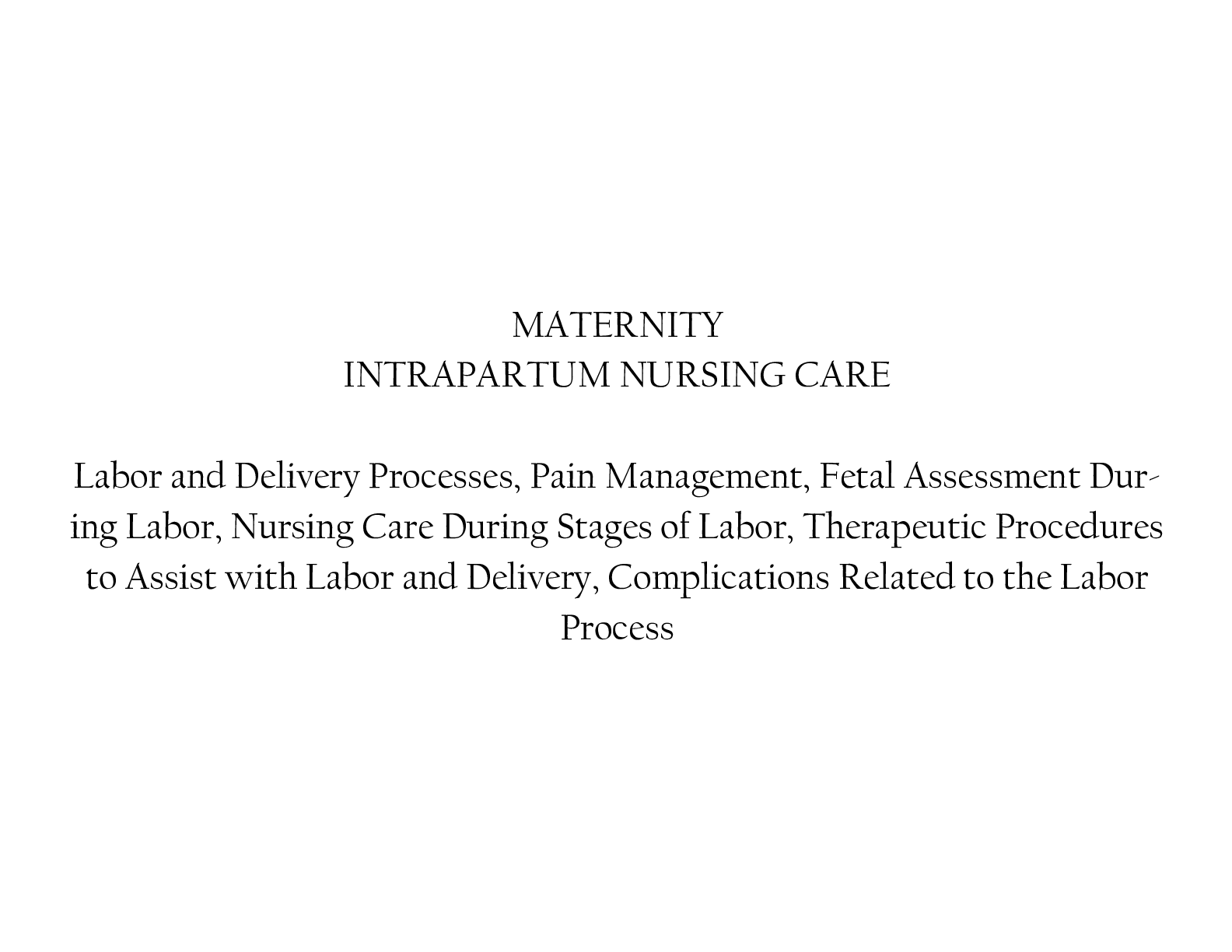
Reviews( 0 )
Document information
Connected school, study & course
About the document
Uploaded On
Sep 12, 2021
Number of pages
48
Written in
Additional information
This document has been written for:
Uploaded
Sep 12, 2021
Downloads
0
Views
49

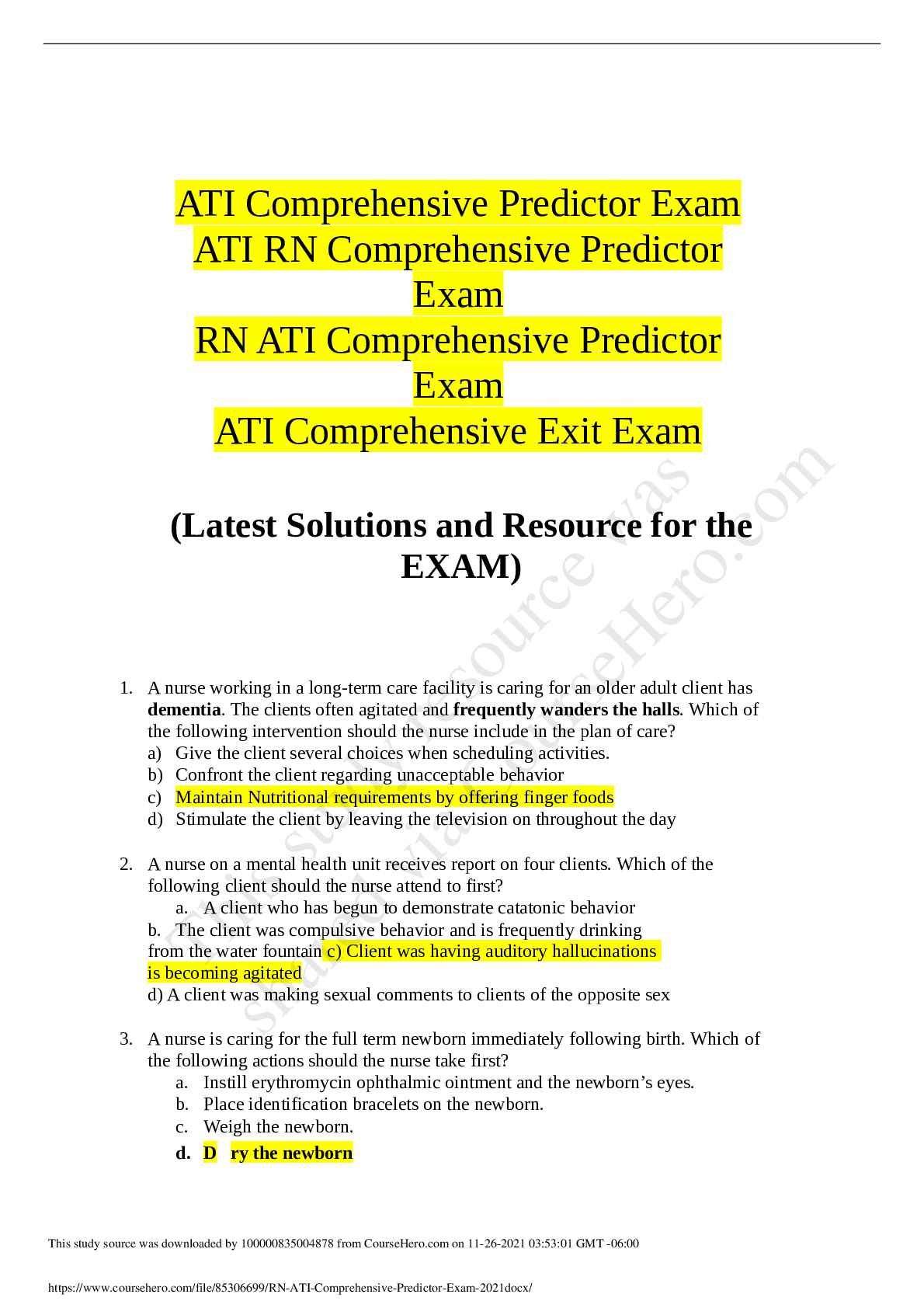
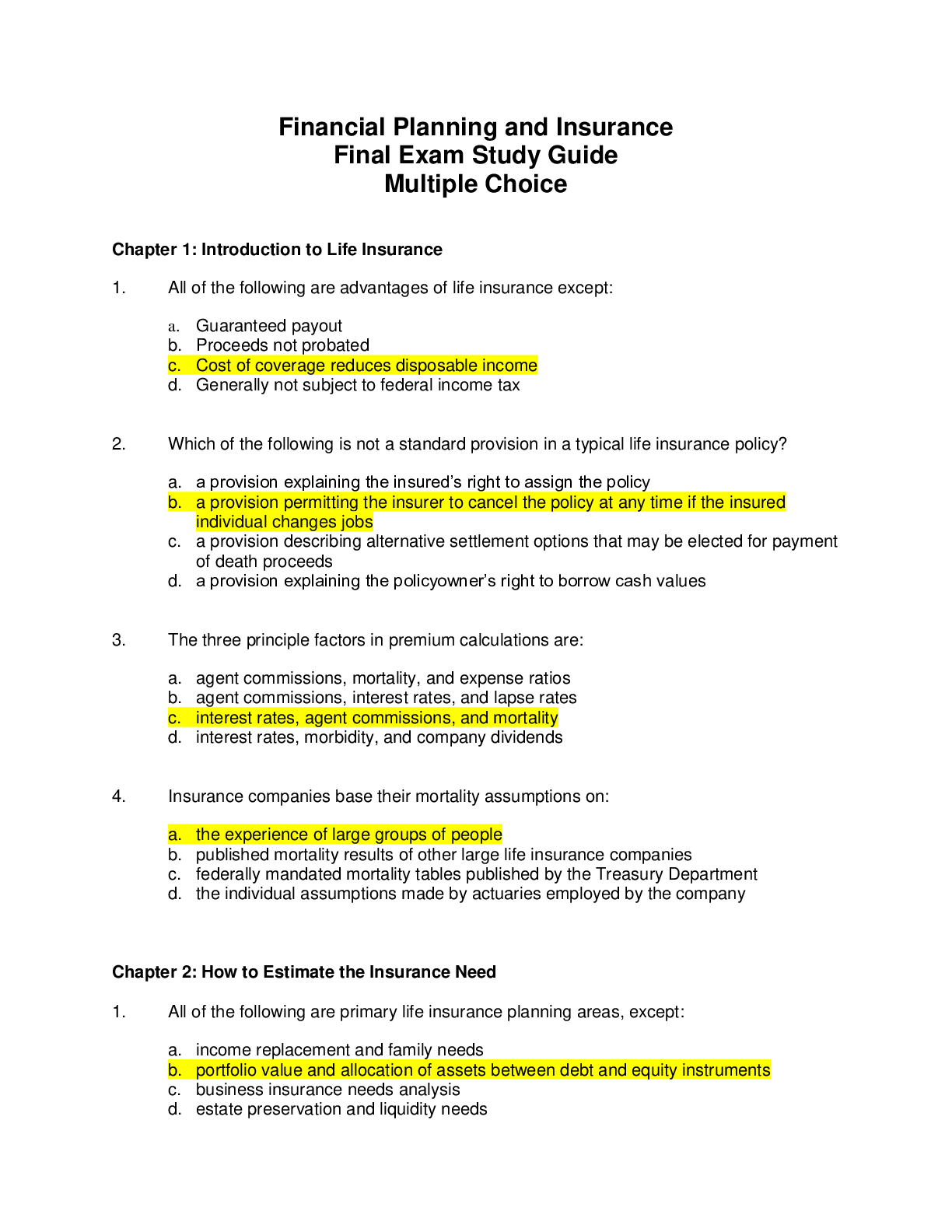
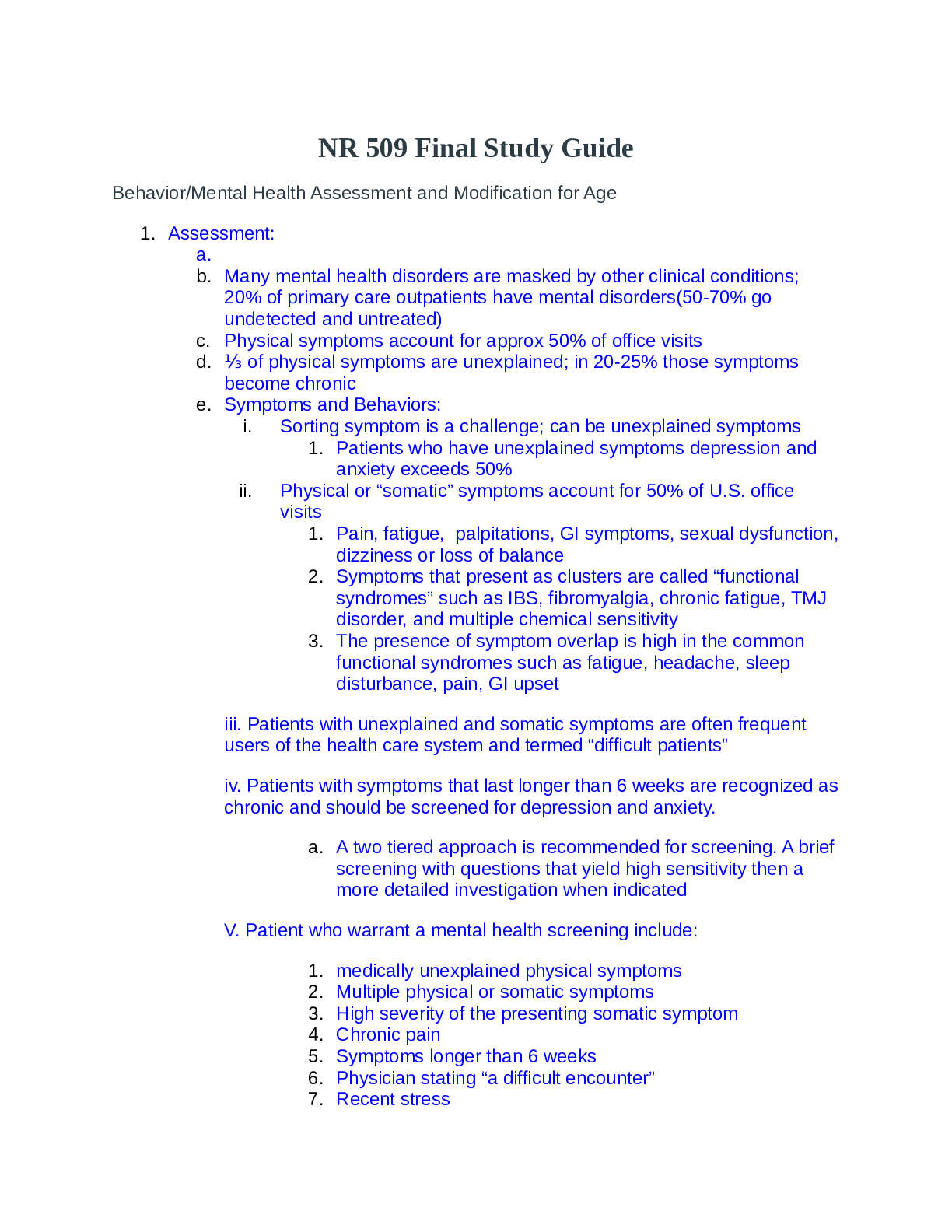
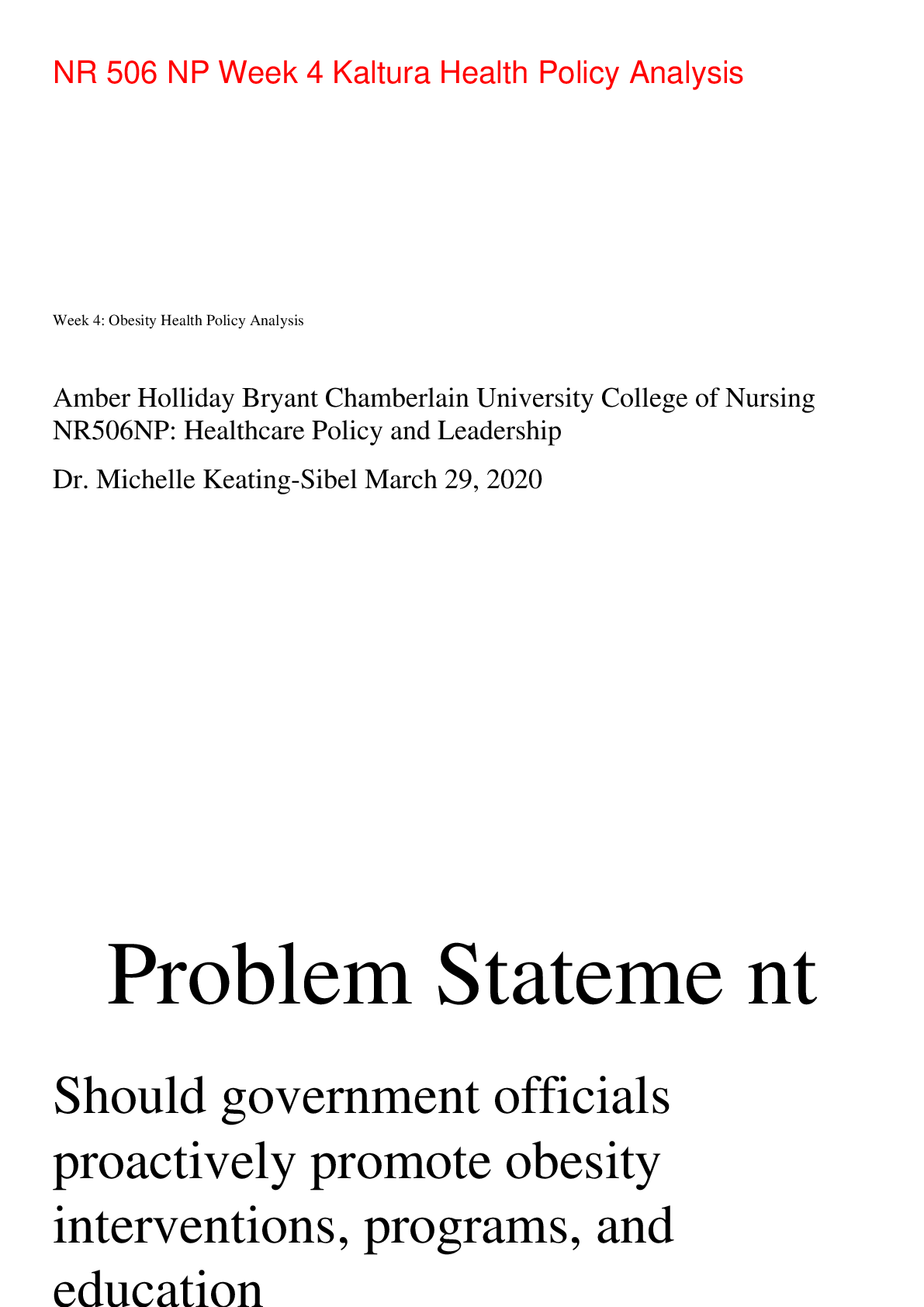
.png)
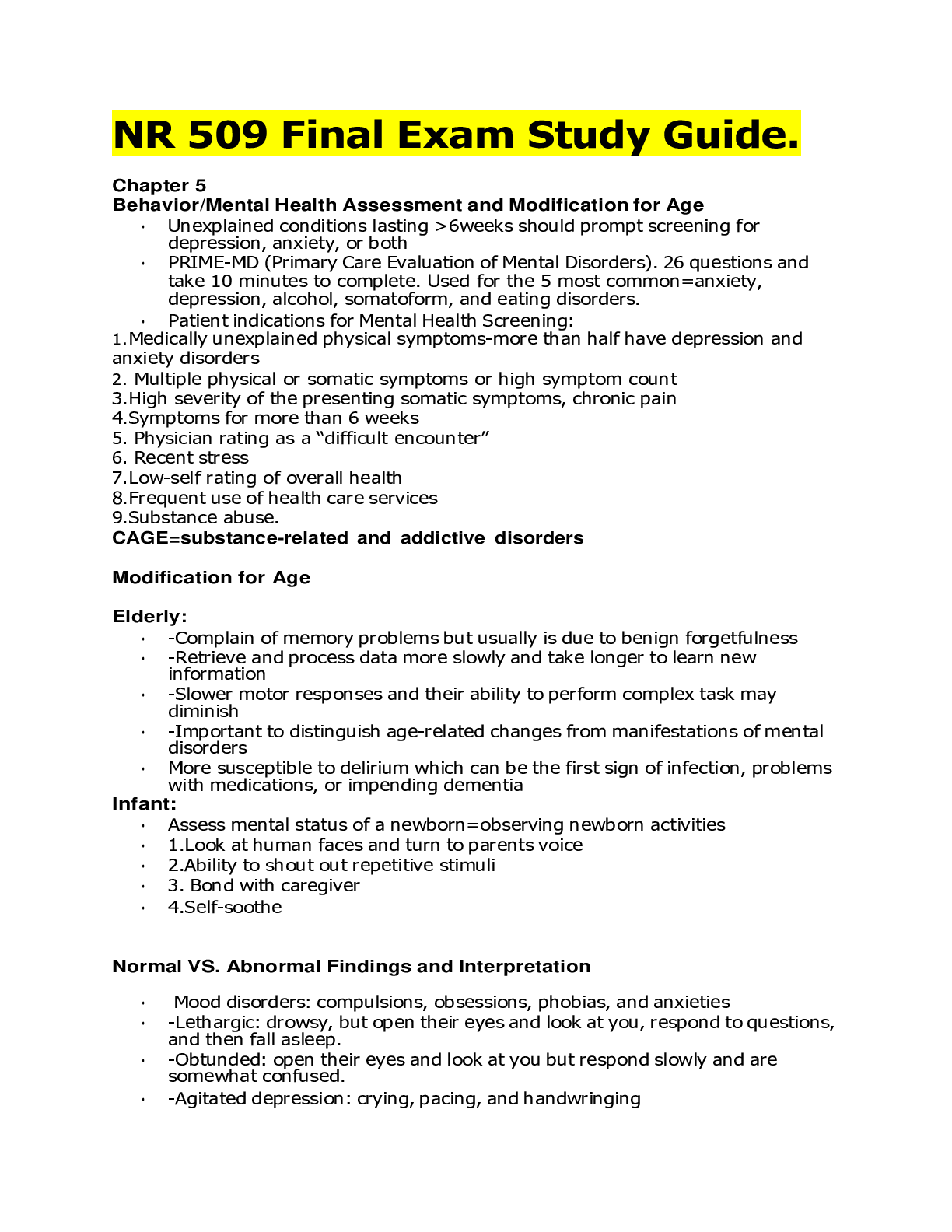
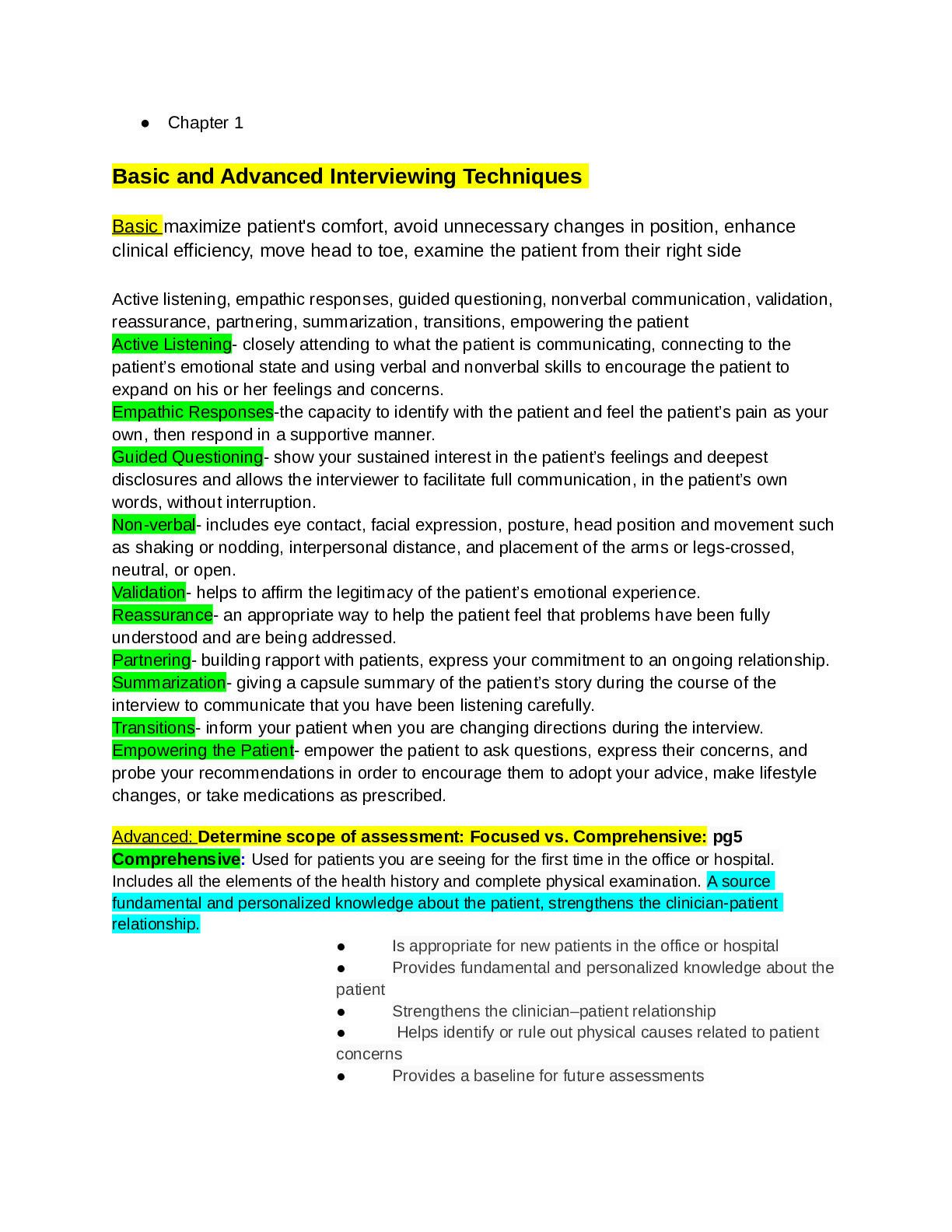



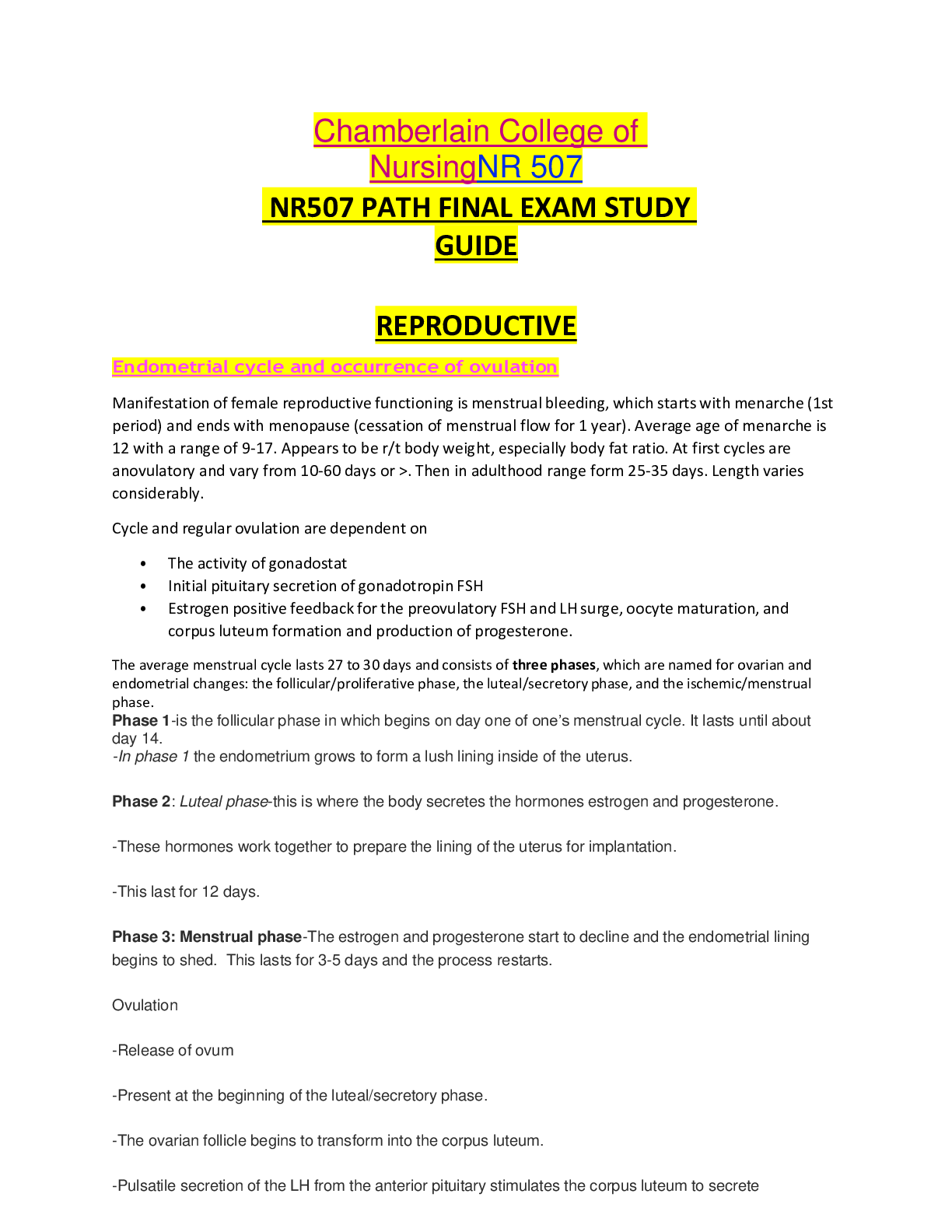
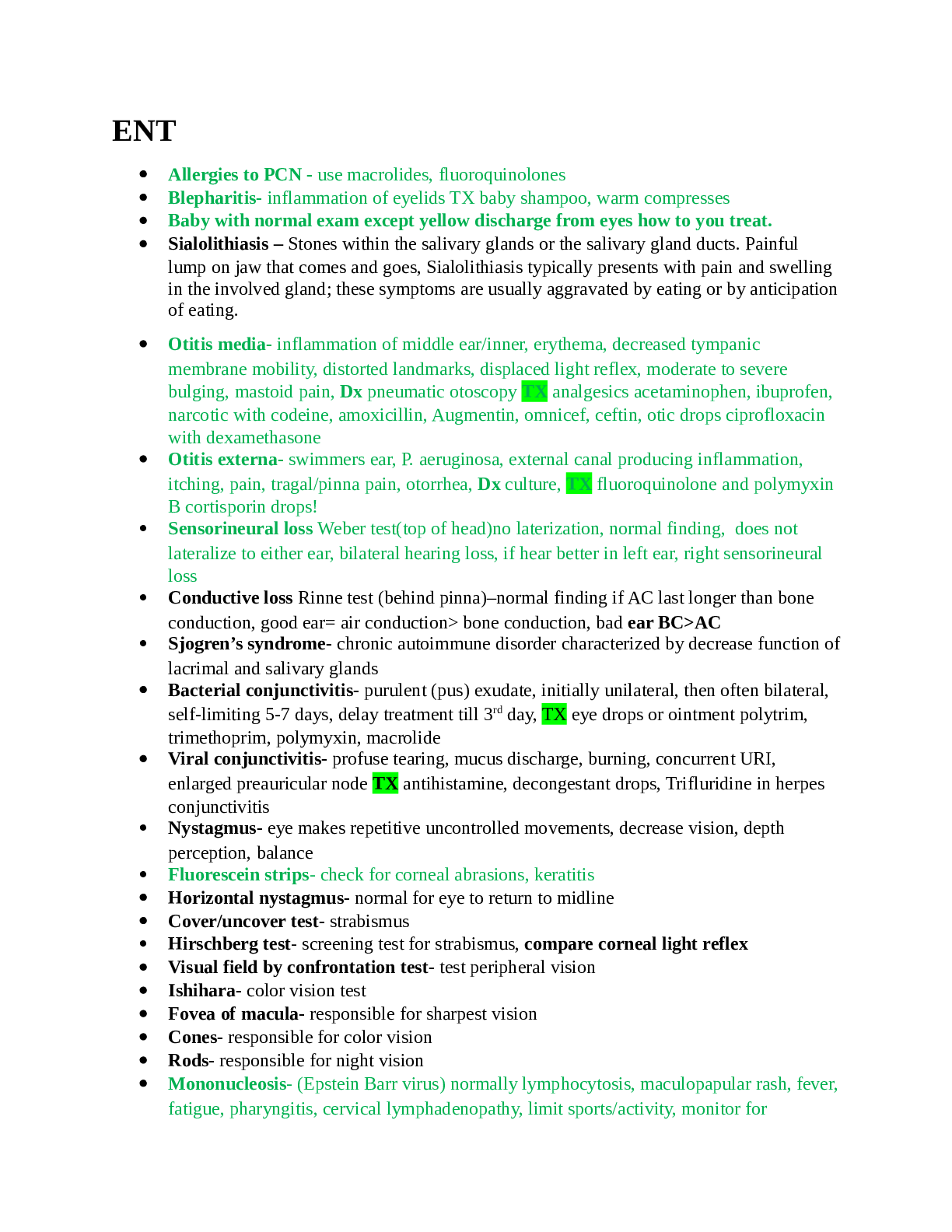
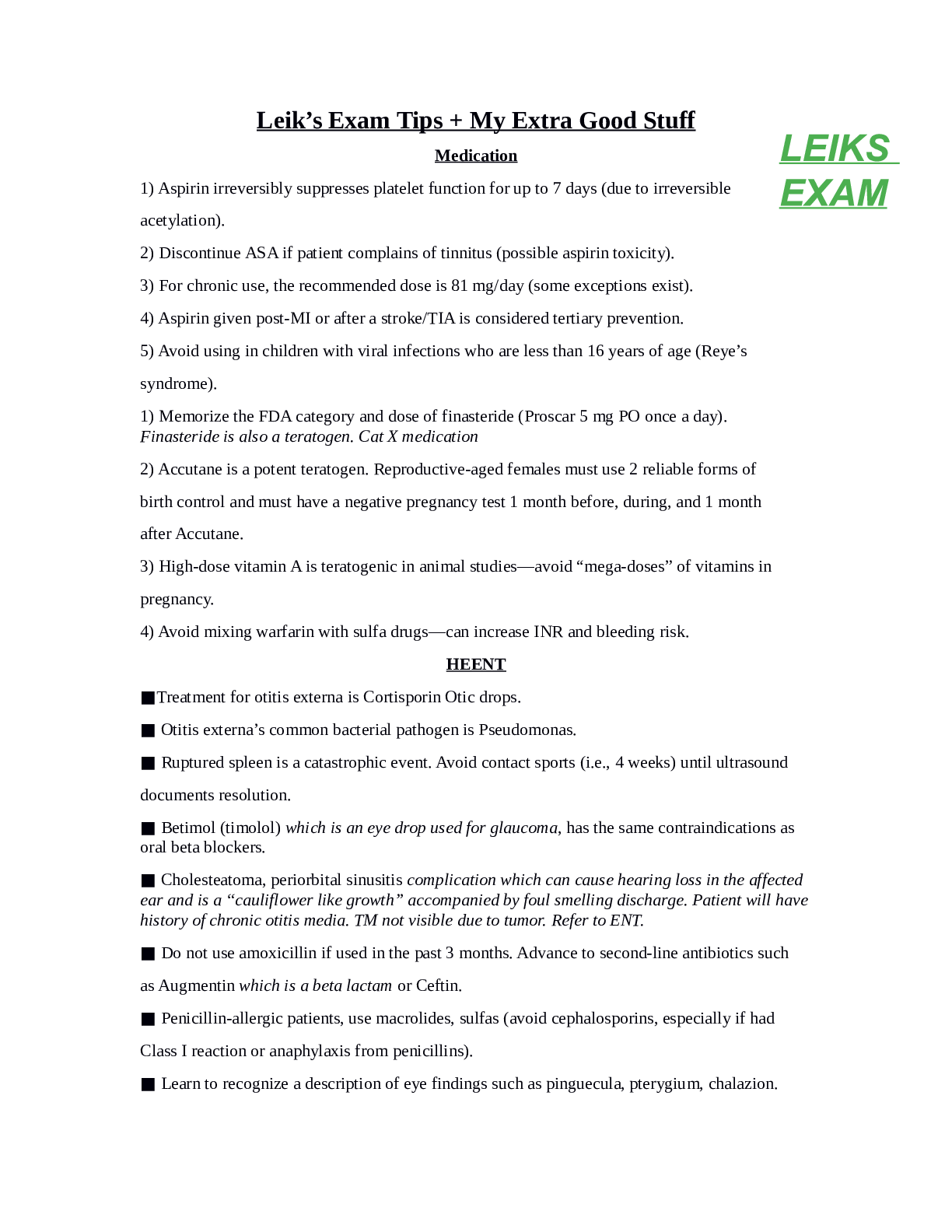
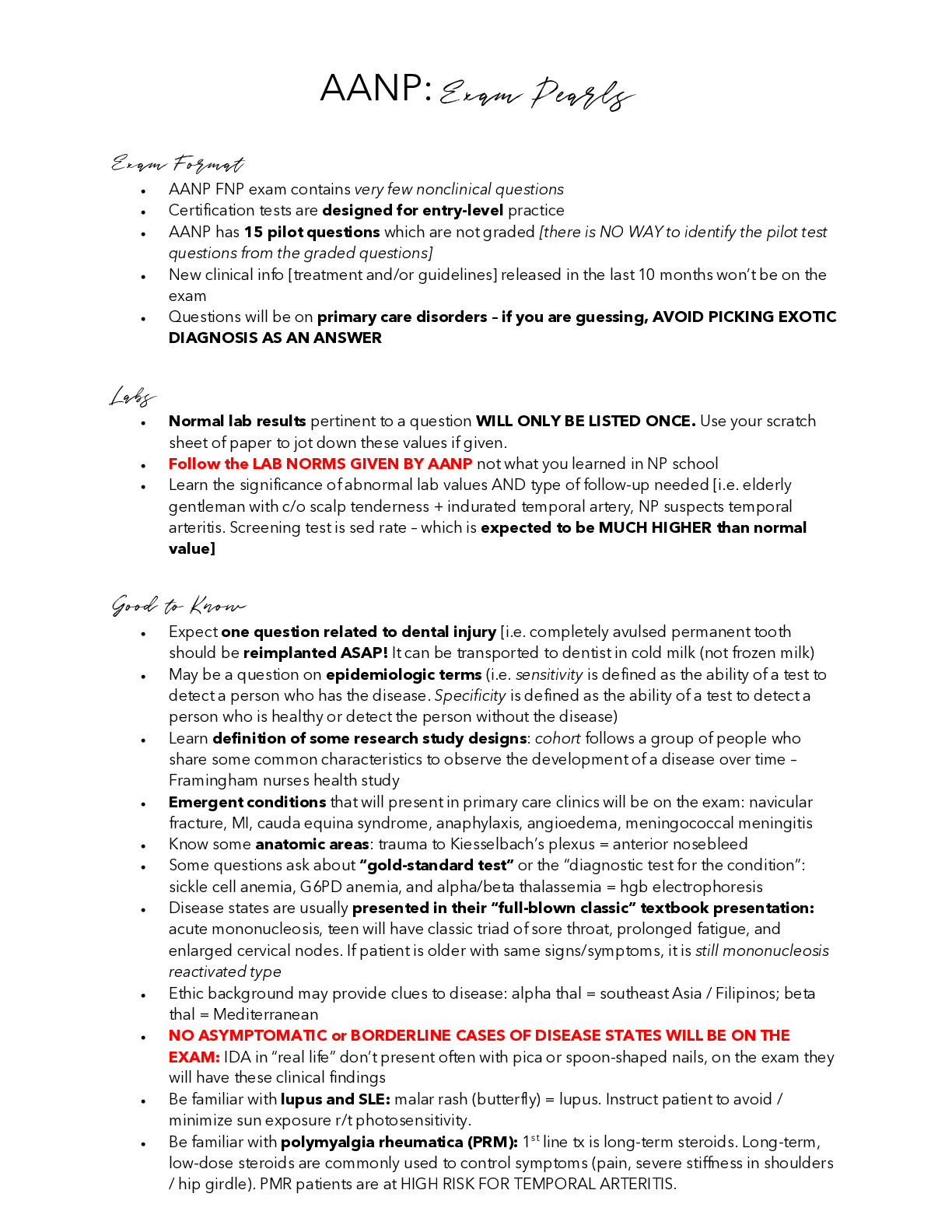
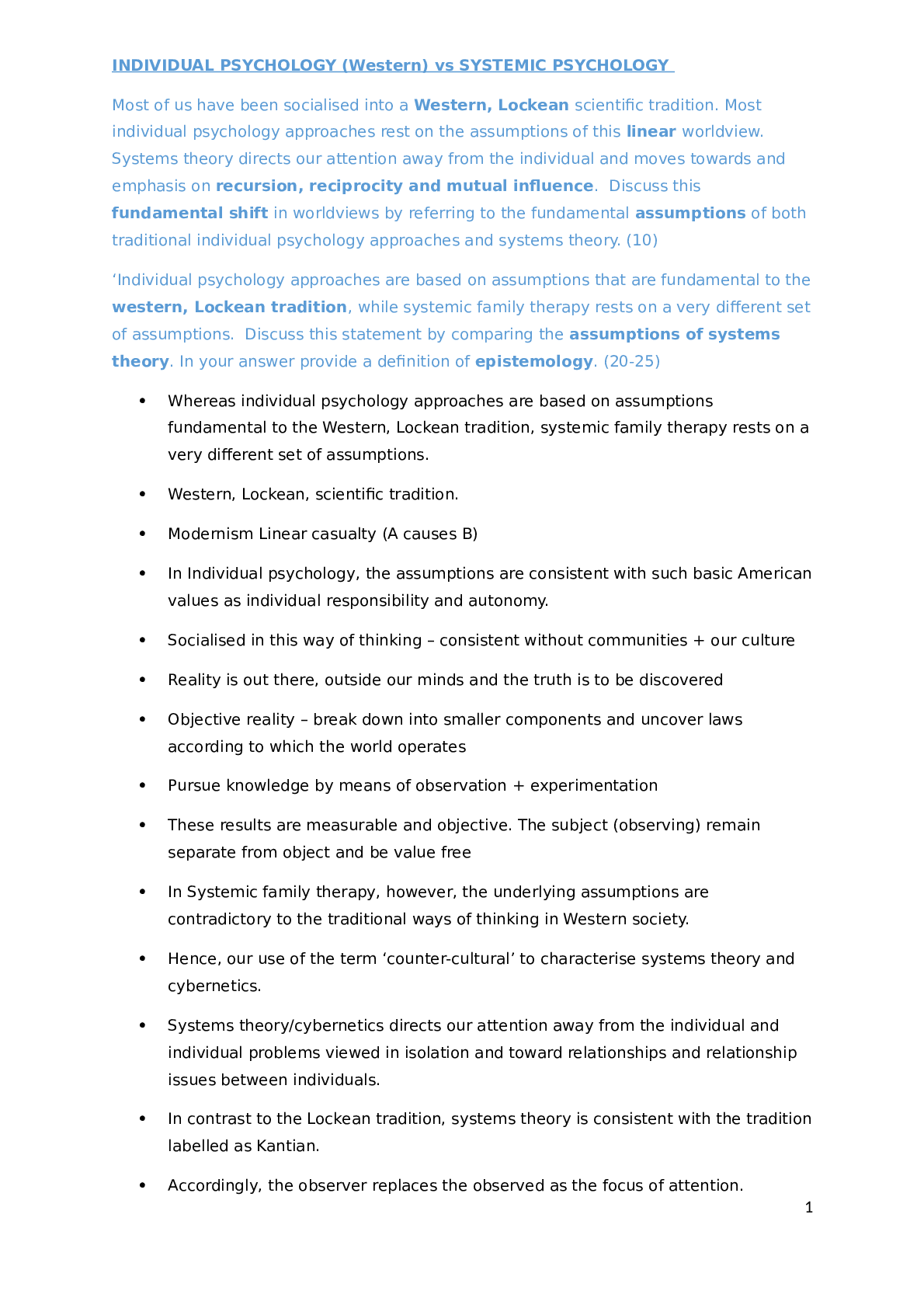




.png)









